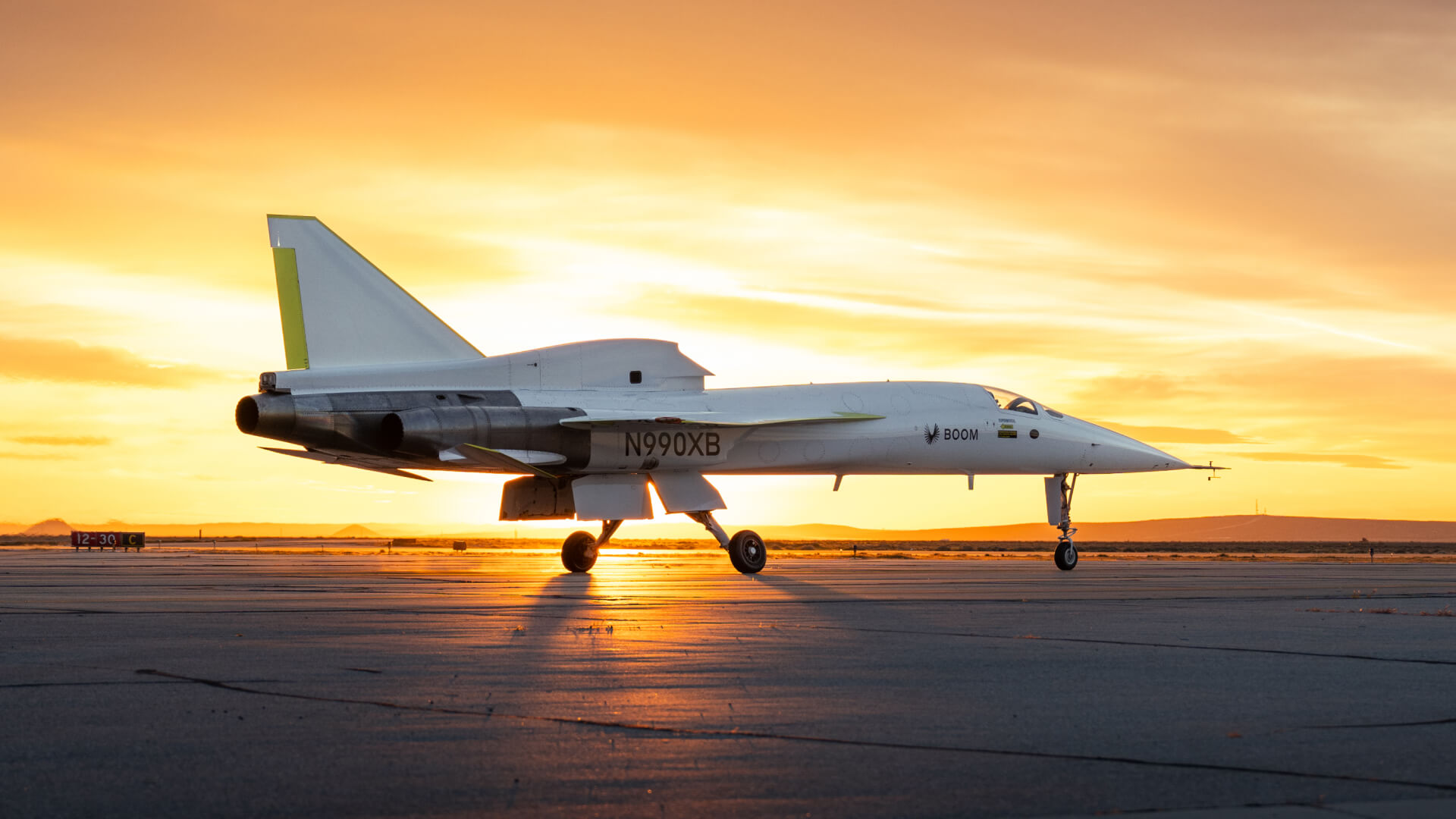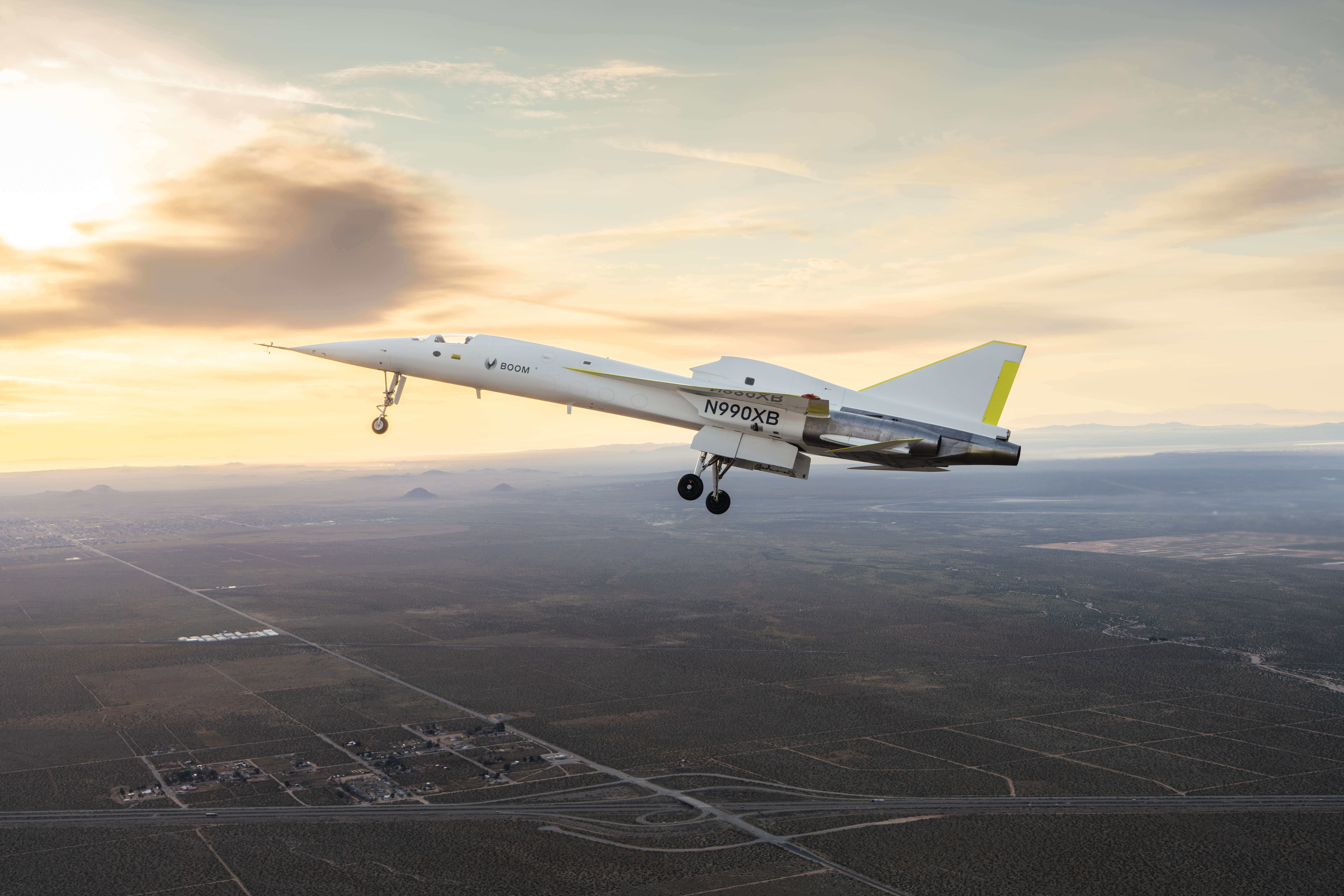History’s first independently developed supersonic jet is built for high speed performance. Every feature, from the nose of the aircraft to the delta wing structure and carbon composite frame, has been optimized and built with supersonic cruise in mind.
Following the reveal of XB-1 on October 7th, 2020, Boom Founder and CEO Blake Scholl led a first-look tour around the aircraft to highlight XB-1’s key design components.
Watch the full video here or read below for highlights.
Fuselage
One of XB-1’s most distinct supersonic features is its body. “Stretching 71 feet, XB-1’s fuselage is designed for speed, reducing drag at supersonic performance,” said Scholl.
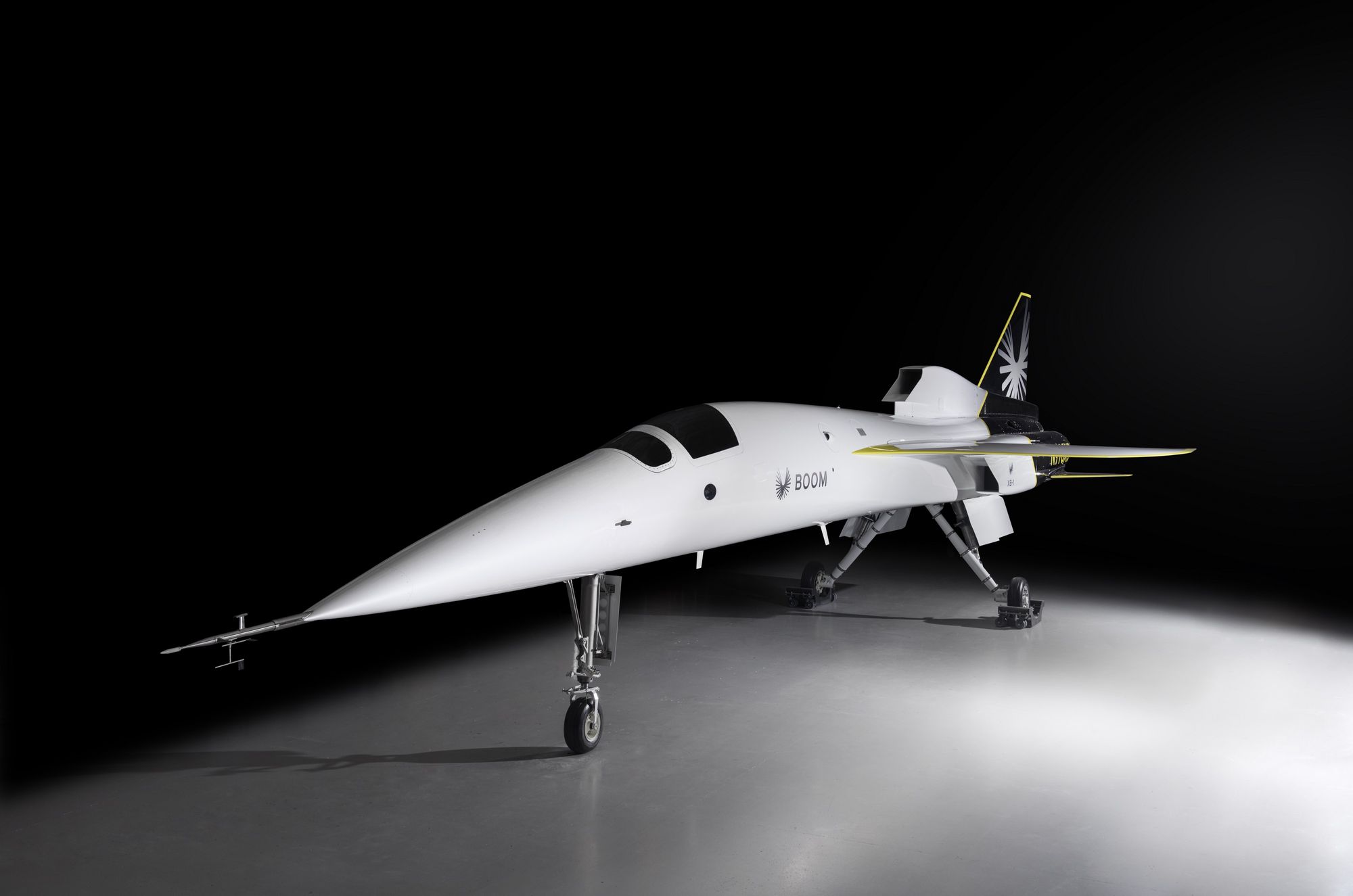
Shaped into a long, slender tube, the fuselage features a high fineness ratio (the ratio between the aircraft’s length and width) to maximize performance. Boom’s engineers designed the fuselage using both physical and digital tools, such as scaled wind models and computational analysis, to allow for rapid iteration of the ideal shape.
Airframe
At supersonic speed, an aircraft exterior can reach temperatures up to 260°F. XB-1’s carbon composite airframe is built to withstand this heat and keep its shape under the most extreme flight conditions.
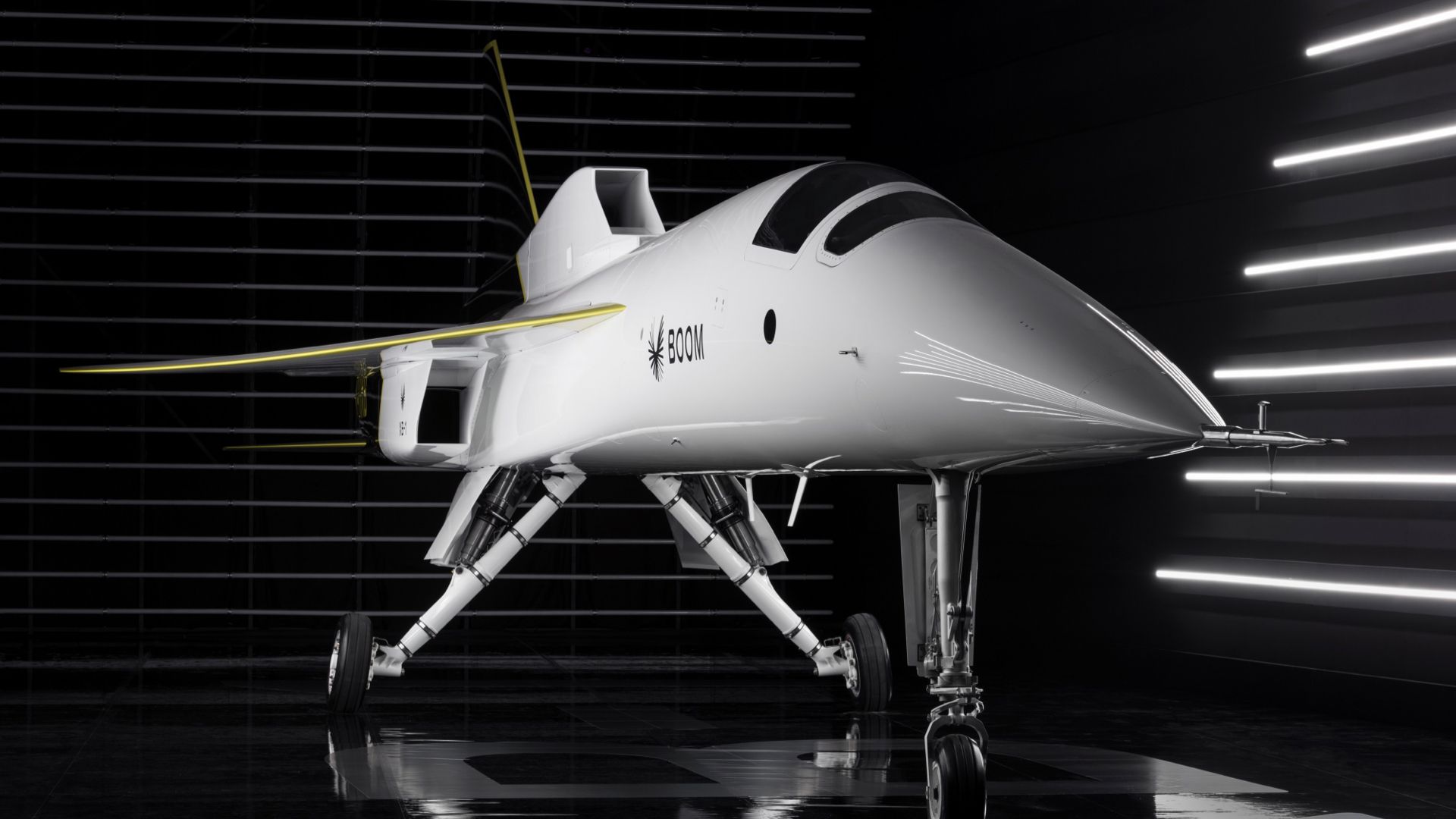
“The carbon composite airframe maintains its rigidity and strength, even under the temperatures and pressures of high-speed flight,” explained Scholl. By constructing the aircraft primarily with carbon fiber, Boom gained a number of significant advantages over traditional metals like aluminum, which can expand over 12 inches during supersonic cruise.
Delta wing structure
XB-1’s triangular wing structure is markedly different from the subsonic aircraft we are familiar with today. Scholl explained: “XB-1’s delta wing balances low speed performance for takeoff and landing with high speed efficiency.”

Just as strong as it is efficient, XB-1’s singular wing structure has been tested for safe operation up to the maximum load case of 60,000 pounds of force.
Propulsion
Set in XB-1’s aft fuselage are three J85–15 engines, producing a maximum thrust of 12,300 pounds of force (lbf). “These three J85 engines, designed by General Electric, propel it to breakthrough supersonic speeds,” added Scholl.
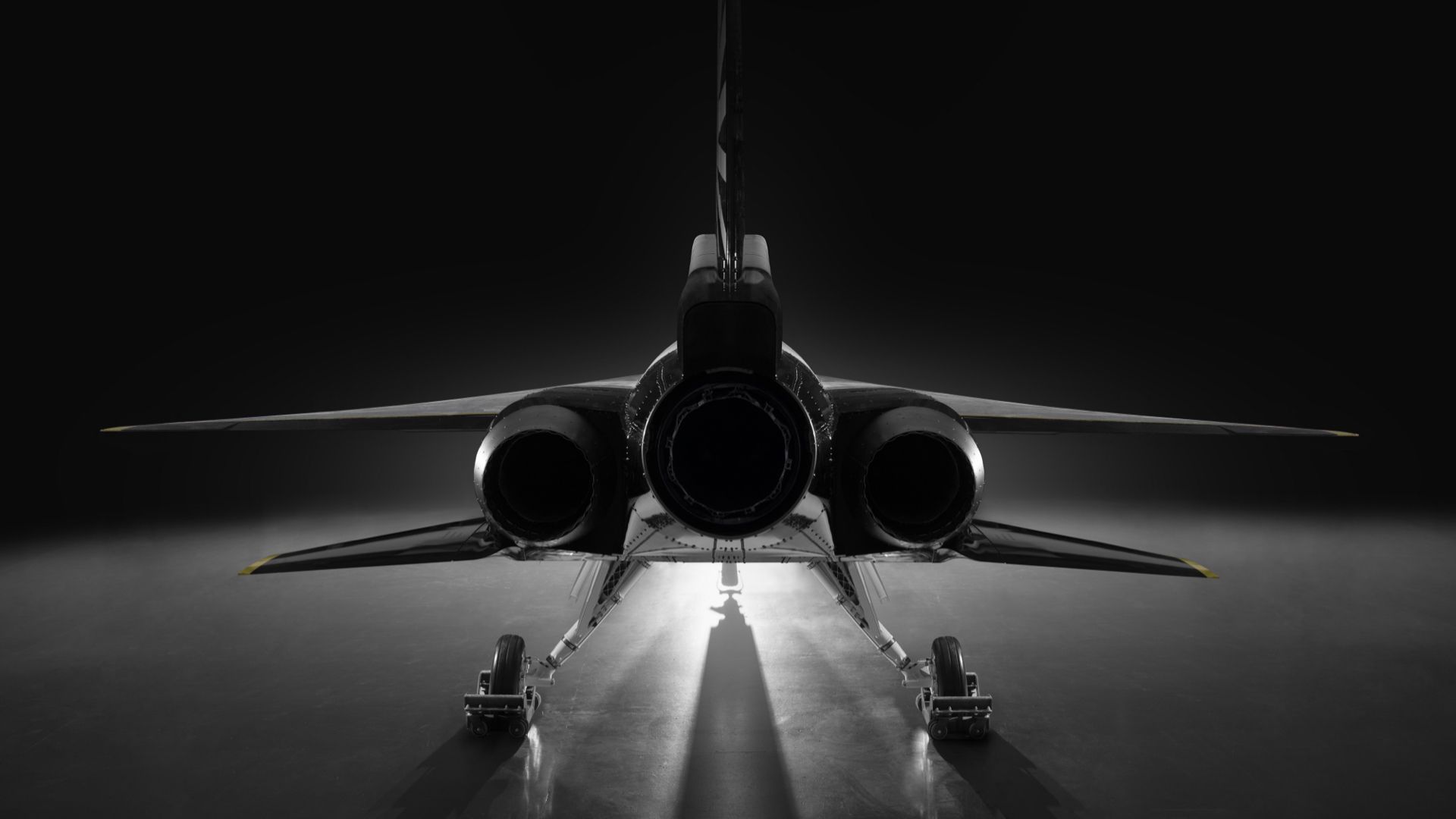
Cockpit
XB-1’s one-seat cockpit, built around the pilot’s line of vision, supports visibility during takeoff and landing. A forward vision system, installed in the nose landing gear, adds a second live view of the runway during landing.

Involving Boom’s test pilots early in the design process ensured that the cockpit and instrument configuration met their exact needs. “The ergonomic cockpit was designed with our test pilots in the loop,” said Scholl, “with hundreds of hours of human factors analysis and usability testing.”
Nose
The nose, where high speed air meets the aircraft for the first time, is precisely shaped to control how the rest of the vehicle experiences air flow. It minimizes drag, benefits low-speed performance, and supports the successful operation of every component behind it.

“The nose generates the precise vortex flow to ensure stability across a wide range of airspeeds,” concluded Scholl.
Looking forward
Each and every one of XB-1’s components has been designed for safe and efficient supersonic flight. More significantly, everything learned from this aircraft has directly informed the design and development of Boom’s supersonic passenger airliner, Overture.
XB-1 continues to pave the way for a new age of mainstream supersonic travel.



